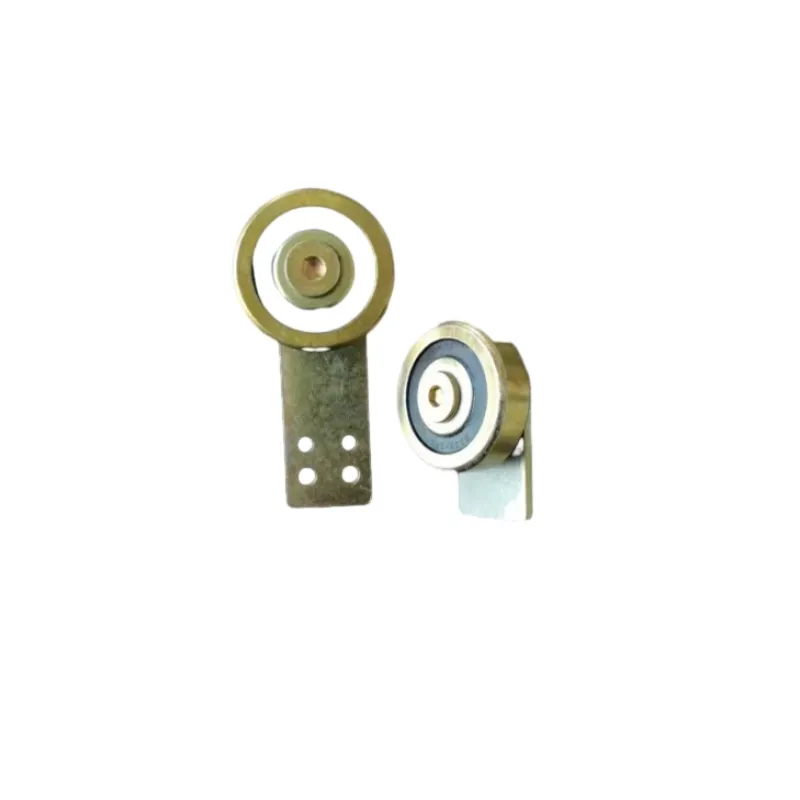
Nov . 12, 2024 07:58 Back to list
deep groove ball bearing calculation
Deep Groove Ball Bearing Calculation An Essential Guide
Deep groove ball bearings are one of the most commonly used types of bearings in machinery and industrial applications. They are designed to accommodate both radial and axial loads, making them versatile for various applications in automotive, aerospace, and manufacturing sectors. Calculating the performance and lifespan of these bearings is critical for ensuring their reliability and efficiency in operation.
Understanding Deep Groove Ball Bearings
Deep groove ball bearings consist of an outer ring, an inner ring, a set of balls, and a cage that holds the balls in place. The design allows for smooth rotation and reduced friction, which is essential for the efficient operation of mechanical components. They come in various sizes and materials, making them suitable for diverse applications.
Importance of Calculation
Calculating parameters such as load capacity, life expectancy, and operating speeds is crucial for selecting the right bearing for your application. These calculations help in predicting how long a bearing will last under specific conditions and determine whether it can handle the loads it will experience during operation.
Key Calculations
1. Dynamic Load Rating (C) The dynamic load rating (C) is a measure of a bearing's ability to withstand loads while rotating. It is determined through standardized testing and represents the maximum load that can be applied to the bearing for a specific number of revolutions. The unit is typically in newtons (N).
2. Static Load Rating (C0) While the dynamic load rating applies to bearings in motion, the static load rating (C0) considers the maximum load a bearing can withstand without permanent deformation while stationary.
deep groove ball bearing calculation

3. Equivalent Dynamic Load (P) To calculate the equivalent dynamic load, we can use the formula \[ P = X \cdot F_r + Y \cdot F_a \] where \(F_r\) is the radial load, \(F_a\) is the axial load, and \(X\) and \(Y\) are factors that depend on the bearing type and configuration. For deep groove ball bearings, generally, \(X\) and \(Y\) values can be found in standardized charts provided by bearing manufacturers.
4. Bearing Life (L10) The L10 life of a bearing indicates the number of revolutions at which 90% of a group of identical bearings will still be operational. It can be calculated using the formula \[ L_{10} = \left(\frac{C}{P}\right)^3 \] Here, \(L_{10}\) is given in millions of revolutions, \(C\) is the dynamic load rating, and \(P\) is the equivalent dynamic load.
5. Speed Ratings Each bearing has a maximum speed at which it can operate efficiently. Exceeding this speed can lead to increased frictional heat and potential failure. The speed rating can be identified from the manufacturer’s catalogue and should always be considered when calculating bearing performance.
Factors Influencing Bearing Performance
Several factors can influence the performance and lifespan of deep groove ball bearings, including
- Lubrication Proper lubrication is essential to minimize friction and wear. The type and quality of lubricant can significantly affect bearing life. - Installation Correct installation is vital for ensuring alignment and minimizing stress on the bearing, which can prevent premature failure.
- Operating Environment Conditions such as temperature, humidity, and exposure to contaminants can all affect bearing performance.
Conclusion
Deep groove ball bearings play a vital role in the functionality of various machinery. Understanding how to calculate their load ratings, lifespan, and performance metrics is essential for engineers and technicians in the field. By taking into account the dynamic and static load ratings, equivalent dynamic load, and proper installation and maintenance practices, one can ensure the reliability and longevity of these critical mechanical components. Properly executed calculations and considerations lead to better decision-making in bearing selection, which ultimately enhances the overall efficiency of machinery and reduces downtime caused by bearing failures.
Latest news
-
Durable Greenhouse Pillow Block Bearings for Reliable Ventilation
NewsAug.31,2025
-
Spherical Roller Bearings Applications: Heavy Duty, Self-Aligning
NewsAug.30,2025
-
Premium Deep Groove Ball Bearings | High Speed & Reliability
NewsAug.29,2025
-
Durable Scaffolding Clamps - Secure & Reliable Tube Connectors
NewsAug.28,2025
-
Common Failures in Thrust Ball Bearings and Solutions
NewsAug.22,2025
-
How Tapered Roller Bearings Can Take Shock Loads
NewsAug.22,2025
